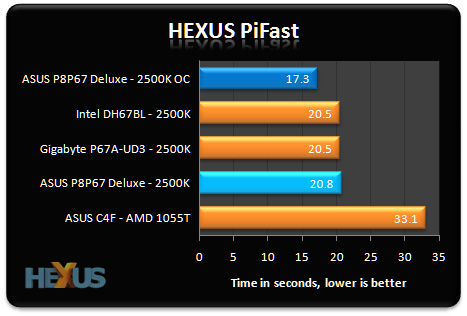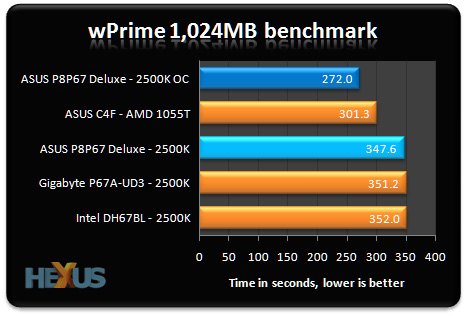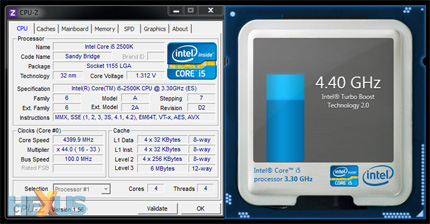Overclocking with an Intel Core i5 2500K
In terms of performance, there has been little to separate ASUS's P8P67 Deluxe and Gigabyte's P67A-UD3 thus far - despite a near-£80 gulf in price. Will ASUS's board show better overclocking potential?
To find out, we overclock the board using two methods - firstly via ASUS's Windows-based AI Suite, and secondly by manipulating the CPU multiplier through the UEFI BIOS.
In Windows, the clunky-looking AI Suite provides a wealth of information and tweaking functionality. We prefer to keep our Windows install as clutter-free as possible, but if you prefer to do your overclocking outside of the BIOS, the AI Suite provides all the tools required - including TurboV EVO, DIGI+ VRM, EPU, FAN Xpert, Probe II, Sensor Recorder and BT GO.
The above links provide a look at the services offered by each, but what we're interested in is the overclocking capability of TurboV.
Assisted by the TPU processor, TurboV can be used to manually adjust system BCLK, CPU multiplier and system-wide voltages. And, if you're looking for a one-click solution, the Auto Tuning function can be used to automatically overclock the system for you.
We gave it a whirl, and after a couple of automatic restarts and stress tests, the utility found a stable overclock of a 103MHz BCLK and 42x multiplier - raising the all-core speed of the Core i5 2500k from 3.4GHz to 4.3GHz. The overclock withstood a Prime95 stress test and it's a very decent return for very minimal effort.
The TurboV software works well enough, but the automatic overclocking isn't quite perfect. Given the volatile nature of BCLK overclocking on Sandy Bridge, we'd like to see ASUS's software provide the option to carry out an automatic overclock via CPU multiplier alone. Furthermore, when any automatic overclock is in place, we couldn't see a way to easily revert back to default settings.
Trying things the old-fashioned way, we dropped into the BIOS to apply a manual overclock and managed 4.4GHz (a 44x multiplier) at 1.3V - a power figure we prefer not to exceed in the interests of processor longevity. Dialling up to a 45x multiplier introduced signs of system instability, but running at a cool 4.4GHz proved perfectly stable.
A 1.1GHz overclock across all cores is impressive, but it's worth noting that we managed to hit the same heights on Gigabyte's cheaper UD3 board. To ASUS's credit, however, the UEFI BIOS makes for a better experience and the P8P67D's heatsinks should help maintain better system temperature.
With the overclock in place, we give the PiFast and wPrime benchmarks another shot.

The Core i5 2500K's ability to turbo boost up to 3.7GHz results in a small-but-significant gain in single-threaded PiFast.

Provide a heavier workload, however, and the overclocked chip's ability to hit 4.4GHz across all cores provides an even greater gain. Intel's K-series Sandy Bridge chips are showing ample overclocking potential, and ASUS's board is primed to take full advantage.












